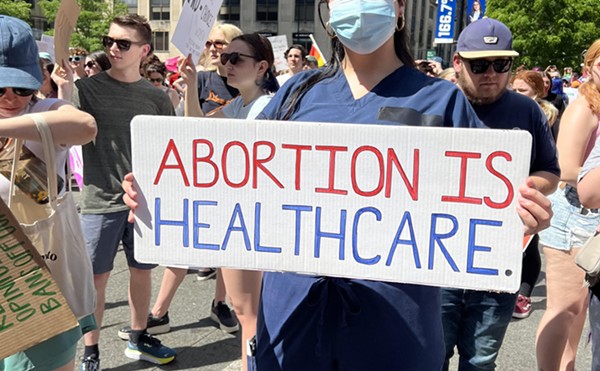Here’s an unfortunate fact for journalism teachers and angry website commenters all around the world: Reality sometimes has a bias.
It’s not what journalism students are taught — “Always get both sides!” — but it’s true. It’s good to start a story by getting both sides, but there’s no shame in acknowledging reality often favors one more than the other.
The easy example is the so-called debate between evolution and creationism in the classroom. On one hand, there’s the foundation of modern biology with mountains of refined scientific evidence. On the other hand, there’s a concept that has no scientific evidence and, in terms of educational purposes, might as well have been devised after a night of special brownies and a Lord of the Rings marathon.
After all, education isn’t about teaching kids what people would like everyone to believe; it’s about fostering critical thinking and skillsets that are applicable to real life. Touting creationism, which has zero substantial evidence, actually goes against teaching students evidence-based critical thinking.
Yet every time the argument flares up again, media outlets squeeze two sides into the story. Nevermind the overwhelming scientific evidence; if a Christian fundamentalist has some anti-science platitudes to spout, the media will be there.
Two-sided story syndrome recently permeated through local news outlets in their coverage of the conflict between Western & Southern and the Anna Louise Inn. At this point, it’s perfectly clear Western & Southern has no moral case to stand on (its legal case is somewhat flimsy in itself). The Cincinnati-based financial giant is just bitter it didn’t buy the Inn, which provides housing services to struggling women, when originally given the opportunity in 2009, so it’s now doing everything in its power to obstruct renovations and bully the Anna Louise Inn into submission.
But that’s not how media outlets are portraying the conflict. A few months ago, The Cincinnati Enquirer published a story on the economic benefits of commercializing the Anna Louise Inn property, citing a study from Western & Southern. Any good journalist would have thrown out the study as obvious propaganda, but The Enquirer decided to give credibility to a narrative that essentially asked if social services should be commercialized for economic gain.
On a national level, the attempt to report two sides has impacted presidential politics. Last year, Mitt Romney ran an extremely dishonest campaign against President Barack Obama. The foundation of his campaign — his massive tax reform plan — was bogus. Romney claimed he could cut tax rates by 20 percent, close tax loopholes and repeal the estate tax and alternative minimum tax, all without raising taxes on the middle class or adding to the deficit.
After extensive analysis, the Tax Policy Center, one of the most respected tax policy research groups in the United States, concluded Romney’s plan was mathematically impossible. Other analyses concurred, and the Romney team’s only counter was a list of “studies,” which consisted of newspaper editorials and analyses authored by partisans like the Heritage Foundation.
But instead of discarding Romney’s tax plan as misleading wishful thinking, the media posed the presidential race as a campaign between two equal, plausible candidates.
By trying to force two sides into these three stories, reporters are being lazy. It’s easy to talk with a few people to write a story that is essentially two sides yelling at each other. It’s difficult, time-intensive and sometimes uncomfortably confrontational to read between the lines and do the kind of extensive research that actually checks both sides’ claims. For a reporter, taking the two-sided approach is thoughtless, while checking claims can pose real critical thinking and the risk of ticking off a few important people.
Journalism is not a field that can afford laziness. In other areas, laziness often results in smaller profits and inefficiency. In journalism, laziness perpetuates harmful ideas and brings down public discourse.
Other News and Stuff
Gov. John Kasich is touting his budget as a boon to education, but new numbers revealed funding increases for Cincinnati Public Schools don’t make up for cuts in Kasich’s last budget.
On a radio show, mayoral candidate John Cranley accused City Council of pushing to build a $100,000 freestanding public restroom, but Council Member Chris Seelbach has repeatedly insisted the plan will not cost anywhere near that number. Instead, City Council is looking at about $40,000 to fulfill a much-needed public service.
CONTACT GERMAN LOPEZ:
[email protected] and @germanrlopez





